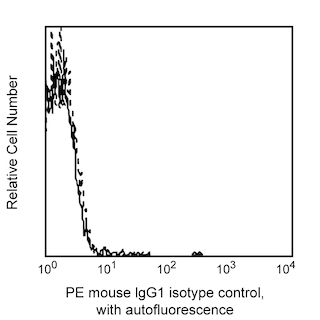-
Your selected country is
Middle East / Africa
- Change country/language
Old Browser
This page has been recently translated and is available in French now.
Looks like you're visiting us from {countryName}.
Would you like to stay on the current country site or be switched to your country?

.png)

Profile of peripheral blood lymphocytes analyzed by flow cytometry.
.png)

BD Pharmingen™ PE Mouse Anti-Human TCR γδ
.png)
Regulatory Status Legend
Any use of products other than the permitted use without the express written authorization of Becton, Dickinson and Company is strictly prohibited.
Preparation And Storage
Product Notices
- Since applications vary, each investigator should titrate the reagent to obtain optimal results.
- Please refer to www.bdbiosciences.com/us/s/resources for technical protocols.
- Caution: Sodium azide yields highly toxic hydrazoic acid under acidic conditions. Dilute azide compounds in running water before discarding to avoid accumulation of potentially explosive deposits in plumbing.
- For fluorochrome spectra and suitable instrument settings, please refer to our Multicolor Flow Cytometry web page at www.bdbiosciences.com/colors.
- An isotype control should be used at the same concentration as the antibody of interest.
The B1 monoclonal antibody specifically binds to the γδ T cell receptor (γδ TCR). This receptor complex consists of two disulfide-linked transmembrane glycoproteins, a γ chain (45-60 kDa) and a δ subunit (40-60 kDa). The γδ TCR is associated with the signal-transducing CD3 complex. The γδ TCR is expressed by thymocytes and by peripheral T cell subsets (γδ T cells) that are located in the blood, liver, skin and various lymphoid and mucosal tissues. γδ T cells contribute to both innate and adaptive immune responses to infections and tumors. Reports suggest that γδ T cells may also play roles in antigen presentation and the regulation of autoimmune responses.

Development References (4)
-
Barclay NA, Brown MH, Birkeland ML, et al, ed. The Leukocyte Antigen FactsBook. San Diego, CA: Academic Press; 1997.
-
Breit TM, Wolvers-Tettero IL, van Dongen JJ. Receptor diversity of human T-cell receptor gamma delta expressing cells. Prog Histochem Cytochem. 1992; 26(1-4):182-193. (Biology). View Reference
-
Kabelitz D, Pechhold K, Bender A, et al. Activation and activation-driven death of human gamma/delta T cells. Immunol Rev. 1991; 120:71-88. (Biology). View Reference
-
Kabelitz D. Function and specificity of human gamma/delta-positive T cells. Crit Rev Immunol. 1992; 11(5):281-303. (Biology). View Reference
Please refer to Support Documents for Quality Certificates
Global - Refer to manufacturer's instructions for use and related User Manuals and Technical data sheets before using this products as described
Comparisons, where applicable, are made against older BD Technology, manual methods or are general performance claims. Comparisons are not made against non-BD technologies, unless otherwise noted.
For Research Use Only. Not for use in diagnostic or therapeutic procedures.
Report a Site Issue
This form is intended to help us improve our website experience. For other support, please visit our Contact Us page.
